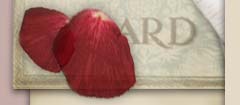The Western Star (Corner Brook)
News, Wednesday, May 4, 2005, p. 12
VE-Day
Dutch war brides came to Canada for adventure in love and life
Morris, Chris
CP
Fredericton - It has been many years since Dutch war bride Olga Rains first saw the Canadian coastline, but she can still recall her feelings of wonder and excitement at the prospect of beginning a new life in a new country with the man she loved.
Standing on the deck of the Queen Mary as the stately ocean liner pulled into Halifax harbour, Rains and other Dutch war brides travelling with her stared in amazement at a place completely different from the war-ravaged Netherlands they had left behind.
"I thought everything was so big," Rains says, remembering the warm August day in 1946 when she arrived in Canada.
"My country is so small. But in Canada, even the coastline was huge. It was so different. The houses were wooden and there was so much space. Holland was run down, it was bombed. I was willing to take a chance on this new place."
Rains, then 20, made her way to Ontario where she and her husband, Lloyd, would settle and raise a family.
Maria Ouellette, 82, who lives in Bathurst, N.B., says she was torn by feelings of loneliness and apprehension as she arrived in Canada, also in 1946.
"I often look back and wonder at how I did this, to come way over here?" says Ouellette, whose husband, John, died 26 years ago.
"But, you know, love does things."
It has been a long time, roughly 60 years, since scores of young women from the Netherlands set off for an adventure in love and life in Canada.
They were the Dutch war brides - women who cast their lots with the young Canadian soldiers who freed their country from Nazi occupation.
Nearly 44,000 war brides came to Canada from Europe between 1942 and 1948, along with 21,000 children. Most of the brides were British, but almost 2,000 were from the Netherlands where a five-year occupation by German soldiers ended on May 5, 1945, just three days before Germany formally surrendered to the Allies in Europe.
The stories of Dutch war brides are filled with drama and romance.
Melynda Jarratt, an historian with the Fredericton-based Canadian War Brides Association, says the experience of the Dutch women was different from that of the British brides.
"There is more fear in the Dutch experience," Jarratt says.
"The Dutch were under German occupation so there was resistance, there were family members executed for being members of the resistance, there was absolute deprivation and starvation, fear of concentration camps and hiding. But they never gave in and they never gave up."
Rains, 79, says she and her family members had only sugar beets and flower bulbs to eat during the long, hard winter of 1945. She says people would break into storage sheds and steal the bulbs.
Rains is now back in Holland where she and Lloyd are helping the illegitimate children of Allied soldiers track down their fathers through a program called Project Roots.
She says the tulips are in bloom in fields across the Netherlands, but she and other survivors of the German occupation look at the beautiful flowers in a different way than other people.
"We had to have something in our stomachs to survive," she says softly. "They tasted horrible, but they helped keep us alive."
The winter of 1945 in Holland is known as the hunger winter. Over 20,000 Dutch people died of starvation and cold as a desperate and cornered German army took out its frustrations on the civilian population.
Ouellette says her most vivid memories are rooted in recollections of fear. She had four brothers who always had to be hidden to avoid being rounded up by the Germans and taken away to labour camps.
The anxiety extended even to some of her own countrymen who were always watching for people who might be too friendly with the Germans.
"We were always afraid," she says, adding that, miraculously, her family survived the war.
One of brothers introduced her to her husband, who was a sergeant in the North Shore regiment, in 1944. She only saw him every six weeks or so, but was eventually won over by his kindness. "I can't say I fell in love right away. It took a little while."
Rains was close to death when the western part of Holland, where she lived, was liberated in May 1945. She had contracted diptheria during the winter and would not have survived much longer.
She can still recall the great joy and relief she felt when Canadian soldiers defeated the German forces.
"We felt they were sent by God to deliver us from the devil," Rains says. "If they hadn't come, we would have starved to death or ended up in concentration camps. I think Holland suffered the most in the last years of the war, so when these boys came in, they were just like a gift from God. And people still see it that way."
Figures: CP
Dutch war brides on the Lady Rodney, November 5-14, 1946, Halifax Harbour, Nove Scotia.



